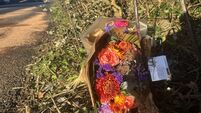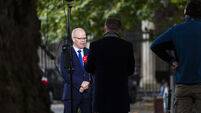Return of the black grouse
They are very handsome birds that still flourish in Scotland and northern England, where they are sometimes known as black game or black cock. But, as is often the case, the suggestion is causing controversy.
The problem is that all the other bird species that have been introduced or discussed for introduction in modern times are species which we know, with certainty, once lived here and became extinct, usually as a result of human activity.
Golden eagles and white-tailed eagles were persecuted into extinction around a century ago. Human persecution was probably also a factor in the extinction of the red kite in Ireland at an earlier date.
Buzzards and great spotted woodpeckers were discussed as the subject of re-introduction programmes, but pre-empted the discussion by re-introducing themselves.
But there is no definite evidence that black grouse were ever native to Ireland.
The subject has been debated for a long time.
In 1850 the eminent naturalist William Thompson wrote: “I have not met with any satisfactory evidence of this very fine bird having been indigenous.” More recent verdicts have been more cautious. In 1986 the archaeological report submitted by Van Wijngaarden-Bakker commented on the difficulty in differentiating between the bones of red grouse and black grouse but added: “There is some slight evidence, however, that seems to point to the black grouse.”
Today the tools available for identifying bones from archaeological digs are much more accurate and there is a possibility that the problem could be solved by re-examining bones that are already in museum collections.
In 1915 a man called R J Scharff published a learned paper on the names of birds in the Irish language. He used comparisons with Scots Gaelic, and black grouse are well known in Scotland.
He claimed there were actually two Irish names for the species, Liath chearc and Cubaire, which would be a strong indication that they were once native.
Even if black grouse were never native, their introduction in the Nephin mountains is unlikely to cause an ecological catastrophe. But sporting interests have tried this on several occasions in the past and each time it has been a failure.
Over the next few weeks ivy will be in flower.
The flowers are rich in nectar and provide an important food source for winged insects, particularly the species that are preparing for hibernation.
The berries, which ripen in the spring, provide food for birds and small mammals at a hungry time of year and the evergreen foliage provides cover for birds, bats and some insects, such as hibernating brimstone butterflies.
Ivy is familiar to everyone, climbing up trees or walls and sometimes carpeting the ground, particularly in shady places.
But some confusion can be caused by the fact that the mature leaves surrounding the flowers are a slim shield shape and quite different to the five-lobed, darker green leaves of the rest of the plant.
There are also two species that grow in Ireland — Irish Ivy and Common or English Ivy. They are not easy to tell apart but the hairs on the growing tips of Irish Ivy are pale brown while on Common Ivy they are whitish.















